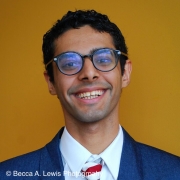
Dr. Sandeep Nanwani is a General Physician and part of the department of Bioethics and Medical Amenities at Gadjah Mada University in Indonesia and a Masters student at Harvard.
What is your current position?
I am a physician at Gadjah Mada University as well as a member and manager of three small NGOs serving specific marginalized Indonesian populations. I also work with the Indonesian State Welfare Department on the Homeless. I am an activist and researcher and a current Masters of Medical Sciences in Global Health Delivery candidate at Harvard Medical School.
Can you tell us about your career path?
I always knew I wanted to be a physician. I graduated from Gadjah mada University with an MD in 2015. As a physician, I have a particular interest in Indonesian populations that are invisible to the state. This includes street youths, beggars, homeless with psychosis or any other disability, transgender populations, and sex workers. The Indonesian bureaucratic system focuses on the household as a unit of measurement, so those who do not fall into this category are not formally recognized by the state. These communities are completely unreached, locked in camps, and have no intellectual body backing them up.
I am very anthropologically-inspired and plan on eventually pursuing a degree in medical anthropology. When I was working with the transgender population during my medical training, I met an anthropologist who had a very close relationship with the transgender community. He served as a kind of mentor for me and recommended readings which complimented the work I do as a physician and activist.
The NGOs I manage are made up of people as diverse as the populations they serve. Our board consists of an HIV physician, an artist, myself, and a transgender woman. Our mission is to connect these populations with the state welfare office. We started with transgender people and had them delivering health care services instead of participating in sex work. We have dramatically changed this community; HIV is no longer a major problem because we put a system in place that is now supported by the state government. Now, we need to address geriatric care for these populations. Next, we want to apply this model to street kids and beggars. Homeless populations with mental illness have a different set of needs, so the model will not apply.
We have found the lowest-hanging fruit to be identity cards; without them, these individuals are not recognized by the state. This is the first step in making invisible populations visible. We work with the national level of government to provide birth certificates and identity cards for these previously undocumented people. Our goals are to provide ID cards plus universal health care. We are identifying community-based methods to identify these people and achieve civil registration. A major question is how we keep track of these populations, some of which are migratory.
When we think of health care delivery, we think of rural settings, household based, and families. What about those who are not in rural settings, do not live in households, and do not have the support of families? How do we reach these populations? Household is a unit for health care delivery. To me, that is surprising.
Can you share your top career goal?
I’m interested in infusing ethnography, the local dynamics, and the voices of people into public health. I am also interested in having other physicians understand marginalized populations.
What is the biggest challenge you face in meeting your goal?
Because “family” is so engrained in Indonesian culture, I always use the term “family” as a framework in my advocacy. Every welfare program is based off the premise of the family. I ask people to think of these marginalized people as members of their own family, and ask themselves if they would let family members be treated in this way.
These populations do not support the notion of productivity and the notion of the return on investment. These populations will not generate a financial return even when they are “well,” so it has been difficult to make a compelling case for their care among people who are used to thinking about care as a return on investment.
When I was younger, I thought advocacy was radical screaming and shouting. Now, I have realized that advocacy is sitting in the government’s office every day and being happy with small wins, changing things slowly and negotiating.
What impact do you think GHDI will have on your career?
GHDI has helped me in the sense that these I see management principles that are really working. More importantly, it has taught me how to do research. I am a physician, I practice medicine and care for people. I don’t write papers or conduct studies. I’m learning how to do that. I have enjoyed meeting people here and hearing how diverse their problems and perspectives are.
What are you most proud of?
I just received a text message from a transgender woman I work with that said: “They just renewed the funding for next year. Happy birthday, Sandeep. You have changed our lives.” For me, that sums up the work I am proud of.
I am also proud of seeing patients get well and seeing them not only heal, but thrive. I always say that valorizing independence isn’t the way to go; it’s about dependence and accompaniment. Because of this work, people who wouldn’t normally donate to transgender or HIV populations are not only donating money, but are donating their time and acting as family members for these people in the hospitals and on the streets.
What advice would you give to someone just starting out in health care in your country?
Go to the field and listen. One of my mentors said to me, “Don’t undervalue the power of your experience. Numbers and data are secondary. Your experience is the only empirical truth.” Also, being able to know people is a goal of its own.